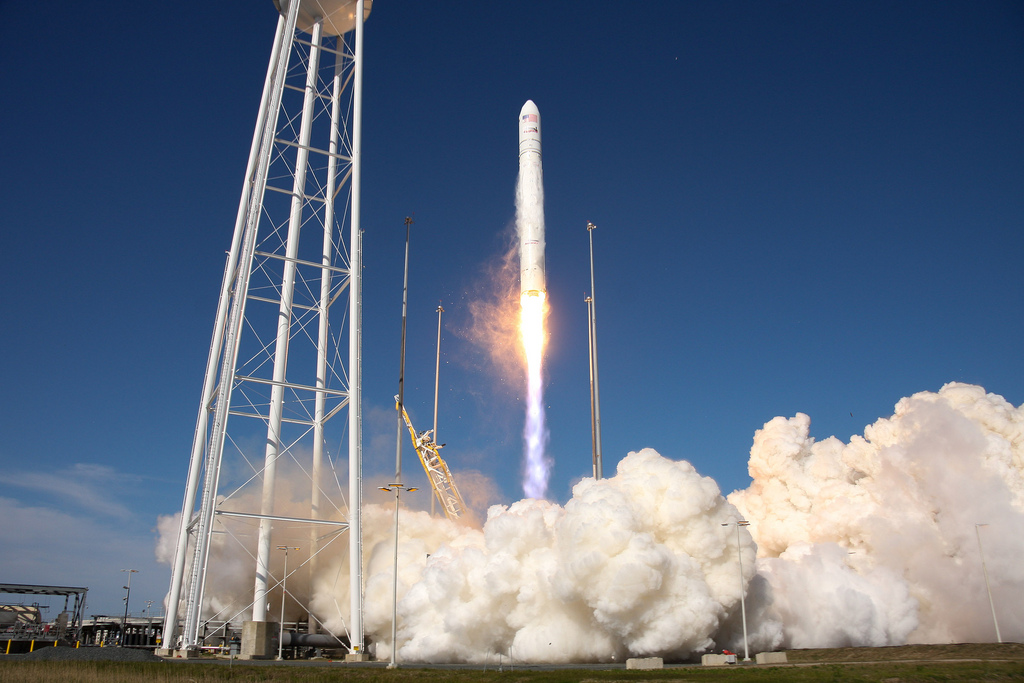When 3D-printing was first introduced, a lot of people assumed that it would make a huge impact in the manufacturing sector, especially with regards to companies producing plastic components. Now, NASA is actually using the technology to build parts for actual rockets and so far, the tests have been promising. This could lead to a cheaper, more efficient future of manufacturing.
Aside from the fact that NASA is creating rocket parts via 3D printing, what makes this feat even more impressive is the matter of doing so with two types of metals. The space agency’s engineers managed to develop a new type of manufacturing method, which produced materials made of different alloys, Phys.org reports.
Researchers have been trying to do this for years, but it’s an incredibly difficult process. Now that it has been accomplished, it could go a long way towards making the manufacturing process of creating rockets considerably cheaper, the director of the Engineering Directorate at Marshall Space Flight Center, Preston Jones said.
"It is a technological achievement to 3-D print and test rocket components made with two different alloys," Jones explained. "This process could reduce future rocket engine costs by up to a third and manufacturing time by 50 percent."
The new method that the engineers managed to develop is called the “automated blown powder laser deposition” and it involves two types of materials to be printed as a single piece, Futurism reports. This makes the resulting product considerably more stable, as opposed to the old method of having to weld them together.
What really makes the new method exciting, from a manufacturing standpoint, is the fact that it requires significantly less manpower and time to complete. Not only will this help speed up the production process and prevent delays, it could also mean more types of products created in the future.



 Moore Threads Stock Slides After Risk Warning Despite 600% Surge Since IPO
Moore Threads Stock Slides After Risk Warning Despite 600% Surge Since IPO  IBM Nears $11 Billion Deal to Acquire Confluent in Major AI and Data Push
IBM Nears $11 Billion Deal to Acquire Confluent in Major AI and Data Push  Evercore Reaffirms Alphabet’s Search Dominance as AI Competition Intensifies
Evercore Reaffirms Alphabet’s Search Dominance as AI Competition Intensifies  SK Hynix Labeled “Investment Warning Stock” After Extraordinary 200% Share Surge
SK Hynix Labeled “Investment Warning Stock” After Extraordinary 200% Share Surge  Trump Signs Executive Order to Establish National AI Regulation Standard
Trump Signs Executive Order to Establish National AI Regulation Standard  Adobe Strengthens AI Strategy Ahead of Q4 Earnings, Says Stifel
Adobe Strengthens AI Strategy Ahead of Q4 Earnings, Says Stifel  US Charges Two Men in Alleged Nvidia Chip Smuggling Scheme to China
US Charges Two Men in Alleged Nvidia Chip Smuggling Scheme to China  China Adds Domestic AI Chips to Government Procurement List as U.S. Considers Easing Nvidia Export Curbs
China Adds Domestic AI Chips to Government Procurement List as U.S. Considers Easing Nvidia Export Curbs  SpaceX Edges Toward Landmark IPO as Elon Musk Confirms Plans
SpaceX Edges Toward Landmark IPO as Elon Musk Confirms Plans  Australia Enforces World-First Social Media Age Limit as Global Regulation Looms
Australia Enforces World-First Social Media Age Limit as Global Regulation Looms  EU Court Cuts Intel Antitrust Fine to €237 Million Amid Long-Running AMD Dispute
EU Court Cuts Intel Antitrust Fine to €237 Million Amid Long-Running AMD Dispute  Microsoft Unveils Massive Global AI Investments, Prioritizing India’s Rapidly Growing Digital Market
Microsoft Unveils Massive Global AI Investments, Prioritizing India’s Rapidly Growing Digital Market  Taiwan Opposition Criticizes Plan to Block Chinese App Rednote Over Security Concerns
Taiwan Opposition Criticizes Plan to Block Chinese App Rednote Over Security Concerns  Australia’s Under-16 Social Media Ban Sparks Global Debate and Early Challenges
Australia’s Under-16 Social Media Ban Sparks Global Debate and Early Challenges  Trump’s Approval of AI Chip Sales to China Triggers Bipartisan National Security Concerns
Trump’s Approval of AI Chip Sales to China Triggers Bipartisan National Security Concerns  Apple App Store Injunction Largely Upheld as Appeals Court Rules on Epic Games Case
Apple App Store Injunction Largely Upheld as Appeals Court Rules on Epic Games Case  SoftBank Shares Slide as Oracle’s AI Spending Plans Fuel Market Jitters
SoftBank Shares Slide as Oracle’s AI Spending Plans Fuel Market Jitters 































